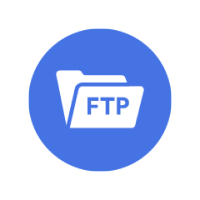Defining your target audience is one of the most important foundational business tasks. When it comes to setting yourself up to consistently convert ideal prospects into happy buyers, it’s even more important to drill down into who your ideal client or customer is.
The key to business success online is really knowing your target audience – surface-level insights won’t suffice.
Deep insight into your audience is essential to develop an effective marketing strategy, starting with how you create and name your products and services, all the way to choosing the marketing channels that appeal to your most likely buyers.
You can’t write persuasive marketing assets like Facebook ads, landing pages, website copy, email sequences and sales pages unless you know who you’re writing for.
The payoff for deeply understanding your target audience is marketing more efficiently and affordably. Thoroughly knowing your audience allows you to allocate your marketing dollars to the specific messages and channels that are relevant to your ideal audience. This is crucial when you don’t have money to spare spreading your campaigns across platforms where your audience doesn’t hang out.
Helpful definitions
If you’ve spent any time researching how to define your target audience, you’ve probably seen several terms thrown around: target market, target audience, ideal client avatar, buyer personas, and so on. It can be a bit confusing, so let’s begin with a few 101-level definitions.
At its most basic, your target market is the group of consumers or, for B2B, the businesses most likely to buy your products or services. Let’s say you offer interior design services. Your target market might be successful professional couples who earn at least $200K a year and who have just bought a new home.
Your target audience is a more narrowly defined segment of your target market — the people most likely to purchase your products or services. You can target them with a specific marketing message or campaign across several marketing channels.
In the case of our interior designer, the target audience might be professional couples in their late 30s with a combined income of $200K+ per year, who recently purchased a vacation home where they plan to do a lot of entertaining.
An ideal client avatar (ICA) is a detailed profile of the person within your target audience who is ideal for your products and services. It’s possible to have more than one ICA. For these people, you should develop a very targeted marketing campaign in one specific marketing channel, such as Facebook ads.
The ICA for our interior designer might look like this: a professional high-earning woman in her late 30s with disposable income, a husband, two young children, a couple of pets, and a very busy schedule. She and her husband have a new vacation home to decorate but no time to do it themselves. They want their furnishings and décor to have an upscale beachy vibe in the “casual chic” style that can withstand kids, pets, guests, and sand … while still looking gorgeous.
Now that you understand what these terms mean, the next step in defining your target audience is conducting audience research.
How to conduct audience research: 5 steps to gathering data that converts
Audience research may seem daunting and time-consuming, but it gives you a distinct competitive edge over those in your niche who skip the process entirely. Putting in the time up front will provide you with the insights you need for marketing that converts like crazy.
Consider both demographic and psychographic factors
You can define your target audience by demographic factors, such as age, income, education level, marital status, and occupation, or by psychographic factors like lifestyle, values and beliefs, personality, hobbies, and so on.
The best approach is to consider both. Simple demographic data won’t be enough to craft truly persuasive marketing messages that move the needle on buyer behavior.
Interview current customers
The best way to understand your target audience and their challenges is to simply ask about them. Customer surveys can net highly useful data that will inform everything from ads to sales pages to product and service offerings. Jotform offers a broad selection of online survey templates that can be formatted and customized for your unique purposes.
If you don’t yet have clients in the target audience you want to serve, ask friends, family, and acquaintances representative of your ideal clients about their frustrations and fears related to the product or service you offer. If you do face-to-face networking in your industry, you can offer to buy someone coffee or lunch in exchange for a few minutes of their time to ask a few questions.
Identify the key problems you can help your potential clients or customers solve
Before you can create marketing campaigns for your target audience, you have to understand the challenges they face that you are uniquely qualified to solve. For example, our prospective interior design client doesn’t just want someone who can create “casual chic” decor for her new home. She needs a designer who understands her specific requirements as a busy professional who wants a luxurious, yet livable, home that can stand up to the havoc of kids and pets but still look oh-so-fabulous.
Do a competitive audience analysis (AKA, spy on the competition)
Competitive audience analysis can yield a heap of valuable insights into your target audience. Check out the websites and blogs of businesses that serve your preferred audience. Note what topics are covered and which paid services and products are offered. Bonus points if you find sites that have an FAQ page. Just reading through the frequently asked questions will give you a good lead on the help your audience seeks.
Know who isn’t a good fit
While it’s tempting to consider working with anyone who has a checkbook and a pulse, especially if you’re just getting started, you should avoid this if at all possible.
Not everyone is right for what you have to offer, even if they’re ready to sign on the dotted line today. Taking on clients who are a poor fit will leave too you booked up (and resentful) to take on those who might be ideal.
Take it from someone who, when she was just getting started as a freelance copywriter, sometimes ignored her gut, got the deposit, then hated every stinking minute of working with bad fit clients.
Other audience research resources
If you’re feeling ambitious, here are a handful of other methods for gathering useful data on your target audience.
These are the exact resources I share with clients who come to me frustrated, saying, “But I just don’t know how to figure out who to target and what they need help with.” To which I say, “Don’t despair; you can easily figure that out,” and point them here:
Forums. Forums are a great resource for finding out the pains and frustrations of your ideal customers. After all, forums are where people go to find answers to their specific challenges. You can find forums in your niche by googling “your area of expertise + forums.”
Email. Ask everyone who signs up to your list what you can help them with. What are their biggest frustrations related to your area of expertise?
Keyword research. Use a keyword research tool to find out what people are searching for online related to the product or service you offer.
Social media. Run Twitter searches on your area of expertise and stalk Facebook pages that serve your intended audience. Note what issues repeatedly come up for your preferred audience and the language they use to describe them. Ask questions on your own social media accounts, such as, “What’s one thing you’re struggling with right now with [insert your topic here]?”
Amazon. Amazon is a great resource for finding out what people in your audience are already reading and responding to. Do a search on books that cover your industry or niche, and read through a few of the reviews. People will often talk about what’s missing in those books or what wasn’t covered thoroughly enough. This is a gold mine for finding out what people in your niche want and need. I’ve found lots of nuggets o’ gold with this method.
Magazine headlines. While you’re on Amazon, search for magazines in your niche and read through the headlines of five or 10 magazines. Publishers spend thousands of dollars to figure out which stories will generate the strongest reader response, so why not piggyback on that research? If something made it onto the cover of a magazine in your niche, you know it’s a hot topic people want help with.
OK, I think I know who my target audience is. Now what?
You’ve done the hard part; now comes the fun!
You get to apply the audience insights you gained from going through the process above into every piece of marketing collateral you produce — that’s right, all of it:
- Blog posts
- Website copy (and not just page copy either, but headlines, opt-in copy, and call-to-action copy as well)
- Product descriptions
- Facebook ads
- Landing pages
- Sales pages
- Email sequences (including subject lines and P.S. copy)
Basically, you’ll use the information you gathered for every single part of your marketing funnel, from TOFU (top of funnel), through MOFU (middle of funnel), all the way down to BOFU (bottom of funnel).
Once you know who your target audience is, everything else becomes easier. Knowing your target audience tells you what to offer, whom to offer it to, where they hang out, the most effective marketing and media channels to target, and which marketing messages will best resonate with your audience.
Final thoughts
Generic, boring, untargeted marketing will never reel in your ideal clients and customers. To make that happen, you need to research your preferred audience in depth, understand them well, and persuasively communicate your unique ability to help them solve their challenges.
And you do that by defining your target audience and ideal client avatar from the get-go using the steps outlined here.
The good news is, you don’t have to do this all at once. It’s an iterative process. Gather some audience insights, weave them into your marketing copy and offerings, and get more (and better) clients. Do more research, work with more highly aligned clients, tighten up your marketing assets and service offerings a bit more, and get even more clients and customers.
Remember, narrowing down your target audience doesn’t stop people outside that circle from buying from you. Anyone can purchase your products and services, but your marketing dollars are best spent on those most likely to buy — your target audience.






















































































Send Comment: